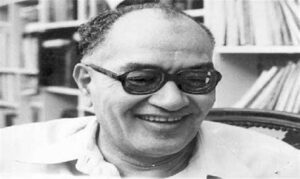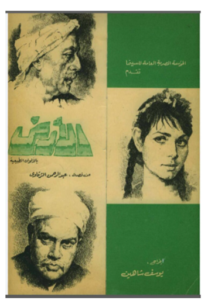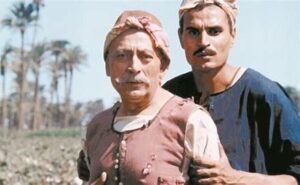***This post was written by Dr Dalia Hussein, a member of the Caliphal Finances team.***
The study of lands, agriculture and irrigation goes hand in hand with that of taxation, especially when the taxes on cultivated lands are the major source of state income, as is the case of the Abbasid caliphate. Extant Egyptian papyri from the Abbasid period show us some details about the lands and the peasants. The latter are mainly present in the documents as tax payers. The picture we can see of the village life is, however, limited.
In his book “Garden of Egypt: Irrigation, Society and the State in pre-modern Fayyūm,” Brendan Haug used fiction to show a lively picture of peasants’ conflicts over the right to irrigation water. During the team discussion of the book, we noticed that Haug, in his chapter 4 titled “Communities of Flow,” quoted many paragraphs of a modern Egyptian novel, al-Arḍ (“the Land”), to clarify his argument that water flows and irrigation within the rural communities are affected by social and environmental elements, and that disruptions to irrigation and to the flow of the water are a reason for conflicts within the peasants’ communities.

ʿAbd al-Raḥmān al-Sharqāwī. Credit : youm7.com
The author of the quoted novel, ʿAbd al-Raḥmān al-Sharqāwī, is my maternal grandfather. Coming from a family of small landowners in the Delta, al-Sharqāwī (1920-1987) was a novelist, a poet, a play writer, a script writer and a journalist. His novel, al-Arḍ, is considered to be one of the most important novels representing the socialist realism movement in Egyptian literature, since it deals with village life in a realistic way, and shows the peasants’ struggle for their water rights and their lands against large landowners and oppressive governments in Egypt under British occupation.

al-Arḍ film poster
The novel starts with a decision to limit the duration of the peasants’ access to water, in order to allow more water to irrigate the estate of a large landlord in the neighborhood. When the peasants complain to the government in Cairo, they discover that the government has decided to expropriate some of their fields to construct a new road, which provides the landlord’s estate with a direct and shorter access to the capital. The novel describes the peasants’ (men and women) resistance to these measures, and the oppressive and violent reactions of the government. Al-Sharqāwī draws a lively picture of village life: we can see the peasants’ traditions, beliefs, songs and dialect. He also shows us moments of solidarity and other moments of jealousy and conflict between peasants. For them, land is not only power, it is mainly honour and pride. This aspect was further reinforced in the film produced in 1969 adapting the novel, which gained equal fame. The film was directed by the world-renown Egyptian director Yousef Shahine, and was shot in al-Sharqāwī’s native village. It was nominated for the Golden Palm Award at the 1970 Cannes Film Festival.

Scene from the movie
The peasants’ struggle for freedom, social justice and equality was at the heart of other important novels and plays by al-Sharqāwī. In 1969, he published his novel al-Fallāḥ (The Peasant), addressing the peasants and the village communities’ problems after 1952. One of his famous plays inspired by the 1881 Egyptian revolt is titled ʿUrābī Zaʿīm al-Fallāḥīn (“ʿUrābī, Leader of the Peasants”). The play pictures Aḥmad ʿUrābī, an army colonel who, like al-Sharqāwī, was born and raised in a village east of the Delta, leading a revolt against the oppressive rulers in 1881 and fighting to prevent the British occupation of Egypt in 1882. The play shows al-Sharqāwī’s perception of the peasants: they are not only involved in struggles related to their lands and livelihood, but also in national resistance against foreign occupation.
- Cover of the play: ʿUrābī, Leader of the Peasants
- Cover of the novel “The Peasant”
Watch the full movie: HERE
Banner Image: Capture of a scene from the movie.






Leave a Reply